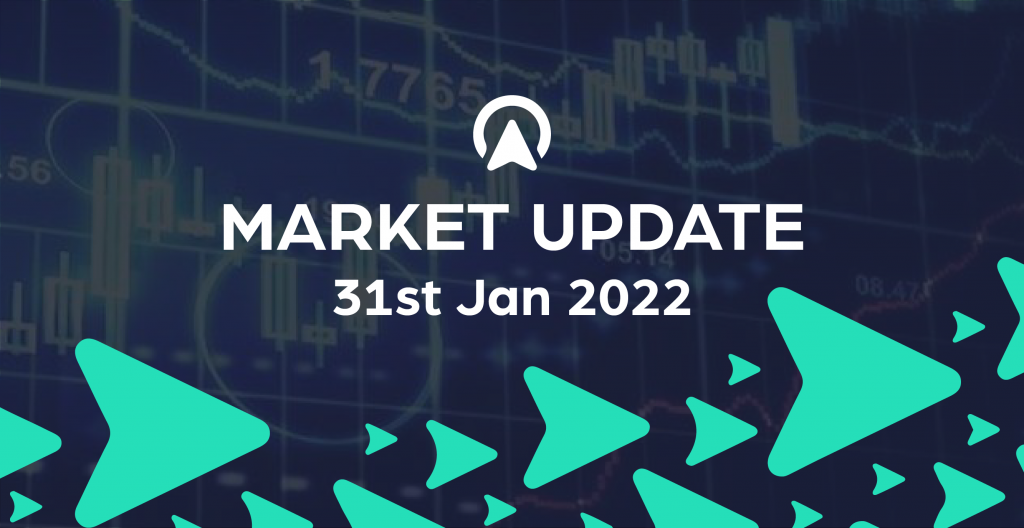
Last week proved to be very volatile, as predicted, with the FED’s FOMC meeting pushing investors to move further away from risk. The same topics of inflation, Russia, and earnings will impact this week with the addition of interest rates decisions and payroll data to add to the mix.
USD: Bullish
The hawkish Federal Reserve took centre stage last week, shaking the world’s markets as appetite for risk swung widely. A combination of earning reports and the anticipation of the FOMC saw a mass sell-off of “risky” assets. The dollar soared higher on confirmation of multiple rate hikes, and bets are coming for the frequency and final rate. Goldman Sachs predicts five 0.25 hikes, ending the year at 1.25-1.5%. Bank of America expects seven rate hikes, BNP Paribas forecasts six, while JPMorgan Chase & Co. and Deutsche Bank see five. A hawkish FED and global market volatility create a perfect environment for a bullish dollar.
In the short term, eyes are on the non-farm payrolls report this week, with employment, particularly rising wages, the key to tackling inflation. Earnings reports from 109 S&P 500 companies are scheduled this week, including tech giants including Google, Amazon and Facebook. Positive numbers will boost the dollar further but could also create more volatility, similar to last weeks stock sell-off after mixed reports from Netflix, Microsoft and Apple.
Lastly, it’s worth keeping an eye on Russian Ukraine tensions with US senators preparing a roster of sanctions on Russian banks, businesses and individuals.
EURO: Bearish
After Wednesday’s FOMC meeting, the dollar shot up whilst the Euro fell down the list of currencies trading around 2% lower since 2022.
Pressure builds on ECB chief Christine Lagarde as inflation climbs to its highest level since the Euro was first introduced. But the ECB will maintain its diverging course with the FED, preserving inflation as “transitionary” and is unlikely to raise rates at this Thursday meeting or anytime before 2023.
On Monday morning GDP Q4 data was released coming in below expectations despite seasonal boosts from the holiday period. The lower figure is potentially a side effect of stricter covid measures seen on the continent.
In the short term, the EURO could suffer some more losses against its key rivals due to a lack of proactive ECB policies around inflation, and the uncertainty around Russia and Ukraine leaves the door open for further volatility.
GBP: Bullish
In anticipation of a 25 basis point hike being delivered by the BOE on February 3rd, the Pound has started the week strong after losses against its major rivals at the end of last week. As riskier assets were sold-off, so too was sterling, a testament to its correlation with risk.
A further three rate hikes are expected for 2022 from the BOE, potentially putting the Pound on a breakout course against the EURO as the divergence between BOE and ECB monetary policies continues.
In other news, the “Party Gate” scandal continues to shadow key headlines, as does tensions with Russia. Removal of the “Plan B” covid restriction does put the UK on course to be one of the first leading nations to move past the pandemic and into an endemic phase.
What to watch this week:
Monday
EUR – Gross Domestic Product s.a. (YoY)(Q4) PREL
Tuesday
USD ISM Manufacturing PMI(Jan)
Wednesday
EUR Consumer Price Index (YoY)(Jan)
Thursday
GBP BoE Interest Rate Decision
EUR ECB Deposit Rate Decision
Friday
EUR Retail Sales (YoY)(Dec)
USD Nonfarm Payrolls (Jan)



